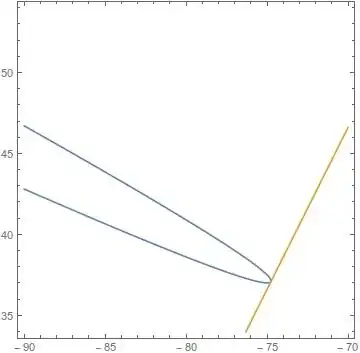So my math teacher in school just gave me the equation of a parabola: $$x^2+4xy+4y^2+2y+2x+75=0$$ I am asked to find its vertex using differentiation and not using any vertex form or anything like that. How do I do that?
Asked
Active
Viewed 186 times
0
Blue
- 75,673
Darth jedi
- 33
-
Hint: Use partial derivatives. – Jose Arnaldo Bebita Dris Oct 31 '19 at 11:34
-
1Hard to say without knowing what you’ve studied. One possibility is to find where the curvature is maximized. Another possibility is to find a point at which the normal line to the curve only intersects it at that point. – amd Oct 31 '19 at 18:26
-
See also : https://math.stackexchange.com/questions/1941210/why-does-partial-differentiation-give-centre-of-a-conic – lab bhattacharjee Nov 04 '19 at 07:03
1 Answers
0
Particular procedure when given $f = x^2+4xy+4y^2+2y+2x+75 = 0$
$$ f_x = 2x+4y+2 =0\\ f_y = 4x+8y+2 = 0 $$
represent parallel lines. The parabola symmetry axis has the same gradient so defining now
$$ l\to -4x+2y-\lambda $$
which is perpendicular to $f_x, f_y$ the next step is to determine $\lambda$ imposing that $l$ is tangent do $f=0$ so substituting $y = \frac 12(4x-\lambda)$ into $f=0$ and solving for $x$ we get
$$ x = \frac{1}{25}\left(5\lambda-3\pm\sqrt{-1866-5\lambda}\right) $$
At tangency, $x$ is unique so $-1866-5\lambda = 0$ giving $\lambda = -\frac{1866}{5}$ and one of the tangents is
$$ l = -4x+2y-\frac{1866}{5}=0 $$
The vertex determination follows.
$$ x^* = -\frac{1869}{25},\ \ y^* = \frac{927}{25} $$
Cesareo
- 33,252
